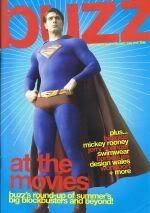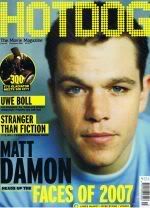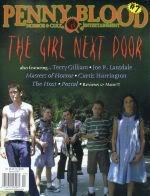Interview with Jon Audarson

The skull emblem is a fairly ubiquitous symbol, especially in the realms of rock music and horror movies. The slightly morbid image, a memento mori, finds itself replicated all over the place – used almost as a sort of marker to indicate that beneath it lurks something darker than your average whatever – so seeing people like Anton Alfred Newcombe, Eli Roth, or Quentin Tarantino wearing clothing emblazoned with skulls isn’t exactly shocking. But in the cases of those aforementioned celebrities, that skull on their shirts has another connotation: it’s the trademark of Icelandic designer/artist Jon Audarson, and these particular clothes are part of the Dead range from Audarson’s shop, Nonnabud, in Reykjavik.
Along with this skull comes a motto: “he who fears death cannot enjoy life.” Diagnosed HIV positive in 1994, death’s a particularly relevant issue to Audarson. Of the motto, he explains “I was in Minneapolis some months before I opened the shop in 2003. I was at somebody's house when I saw this altar made out of paper boxes: it was Mexican, and had this saying/proverb in Spanish.” (Audarson would later find out that the sentence was written by Spanish novelist Mateo Aleman, a troubled and much-translated writer of the 16th century.)
He continues, “I wrote it down and asked the girl who lived there to translate it for me: "Quien teme la muerte no goza la vida,” or "he who fears death cannot enjoy life." For me, it worked right away. Ever since I found out about the HIV I was terrified of going, and going too soon. The doctors only gave me few years in the beginning, so I started spending more time partying and drinking heavily. Then the drugs came and life seemed to be getting better, though I still drank a lot and did hard drugs. In 2002, it was either stop drinking, or die – I quit drinking. The sentence came few months later, and then the skull. I wasn't afraid of dying anymore.” It’s probably this philosophy that’s so endeared Audarson to his many fans; Eli Roth in particular describes his story as “pretty incredible” and stocks up on clothing from Nonnabud whenever he’s in Iceland.
Though the skull label is finding itself displayed on some pretty high profile bodies, Audarson is largely blasé about it all. “It's good for the message to be spread out like that, but death does not care who you are.” It’s an impressively cool attitude. “The skull for me represents us all as a whole, all the same underneath our skin colour, the light at the end of the tunnels, reminder of life – and with the "saying", an replica of the virus, spreading out on T-shirts.” Similarly, he declines to mention any names when asked where he draws his inspiration, and who his heroes are – “[inspiration] comes mostly from inside and above, and somehow I manage to grab it and execute it.” When pushed, he concedes that if he could dress anyone, there are a couple of people he’d like to see wearing his clothing, “Maybe Kjarval.”
It’s characteristic of Audarson to mention an Icelandic artist – Johannes Sveinsson Kjarval was one of Iceland’s most famous painters, renowned for his realistic depictions of Icelandic landscapes, and more fantastical portraits of elves, trolls, and other figures from folk tales and sagas. Of his heritage, Audarson says, “I like my Icelandic heritage and I like using Icelandic things in my art; things and colours from nature. I think the Icelandic flag should have been made black for lava, white for snow and red for fire.” It’s a suitably artistic sounding description, though Audarson doesn’t confine himself to creating things that are idiosyncratically Icelandic – one of his recent designs, and one which attracted a lot of attention, involved transferring the characteristic honeycomb pattern of the Arabian keffiyeh scarf onto what can only be described as a cowboy shirt, a combination that creates a bizarre mishmash of cultures.
It’s another way of making a statement, like the whole ethos of Dead; Audarson’s cheek and charm perhaps only masks a deeper political agenda – he’s also been heavily involved in projects for Designers Against Aids. Art, for him, is a passion, and one that’s deeply ingrained in him. Not only a clothing designer, he’s also a talented painter and sculptor, and he utterly refuses to pick a favourite. “They’re all my sons, but some are more immature than others. I love them all. I see myself wearing my own designed “artistic” clothing, working on some raven sculptures, and an Icelandic landscape painting drying on the table.” Slowly but surely, Jon Audarson seems to be on a mission to conquer the world, one Dead t-shirt at a time; if his motto is to be believed, he certainly isn’t a man to fear death – he’s having far too much fun.
Jon Audarson’s art and clothing can be seen on his website, www.dead.is, or at the Nonnabud boutique in Reykjavik. The Dead design for Designers Against Aids can be found on their website, www.designersagainstaids.com.
In mid-July, he’ll be opening a new shop in Reykjavik named Liborius – a concept store named after his grandmother’s Prussian family name. The store will carry designers, such as Ann Demeulemeester, Undercover, Number (N)ine, 3 as Four, Bless, Jeremy Scott and many more, including, later this year, a new line called Dead Liborius. The store will also include Audarson’s own personal gallery and studio.










No comments:
Post a Comment